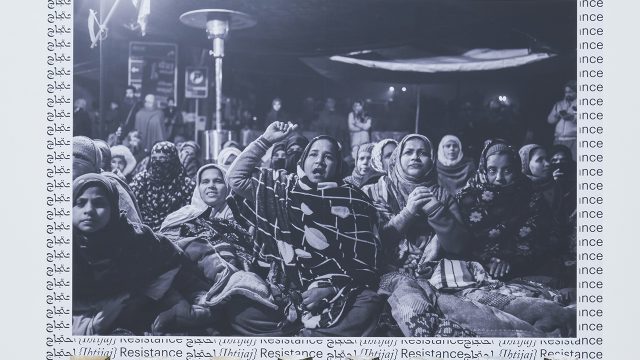Experiences of domestic abuse led fashion designer Emily Cassidy to create a collection which addresses a difficult issue and challenges how society perceives this major problem.
She moved overseas in 2010 and became involved in a romantic relationship which became abusive. This lasted for three years and, after coming home, she was diagnosed with post-traumatic stress disorder.
“On my return to the UK I faced rebuilding my life with little to no self-confidence, having survived what I thought would be how my life ended,” she says.
“I fundamentally struggled to relate to the public perception of my experience and became detached from my experience,” Emily adds. “I couldn’t define myself how society expected me to be. It wasn’t who I was before and I couldn’t start rebuilding my life under these terms, I simply wouldn’t allow myself to be a victim.”
She believes that how the media portrays domestic abuse “is so one-sided and mainly based on hospital admissions and police reports,” in turn “stripping the issue of its humanity”. This became the starting point for her Honours project in a fashion design degree at Heriot-Watt University.

Image courtesy of Ellie Morag
The collection’s name, 1IN3, refers to the shockingly high rates of domestic abuse, and her designs are aimed at giving a voice to people who have experienced it.
“The main aim of 1IN3 is to open a conversation, to give a voice back to us, and bring the humanity back without having to scream and shout about it,” Emily adds. “The wearer can choose how they wear the garments without it having to be shoved in people’s faces in a negative way.”
The design process was very challenging, as initially she “really struggled to communicate it visually”, particularly as the post-traumatic stress “manifests in flashbacks and nightmares which were only in my head”.
“So I started with colours and my worst flashbacks. I recreated them with photography and then altered the colours” with digital and manual techniques until the image came close to Emily’s own experiences. “That was my jumping-off point, but that initial start took a few terrible weeks of worrying I’d never get past that point.”
“Fashion is wearable art,” Emily adds. “Fashion designers use their collections to highlight many issues and have managed to create change through their designs.”
Most of all, she wants “to open a conversation and keep it open, remove the taboo from the issue”.

Emily at her degree show
“Design allows us to communicate, have opinions and individuality. Without design we’d couldn’t evolve,” Emily adds. “It makes us human, it is fundamental to progress. And this makes design a scary thing, but in the right hands you can design something beautiful and amazing which can bring necessary change.”
She fondly remembers childhood holidays to Dundee, where her great-grandmother worked in the mills, and thinks “V&A Dundee is going to be wonderful place”. “The city is such a wonderful, inspirational place for design.”
We are very proud to welcome Emily as one of V&A Dundee’s Design Champions, for her work in thoughtfully approaching her own experiences of abuse – and an incredibly difficult issue for society – through her design talents.
To find out more, please visit Emily’s website.
The V&A Dundee Design Champions are inspirational designers creating high-quality work and helping to enhance people’s lives, or champions of the power of design to improve the world.
We will announce 50 Design Champions in the run-up to the museum opening on Saturday 15 September 2018.
V&A Dundee’s Design Champions project is working with Dezeen as its media partner.
Dezeen is the world’s most popular and influential architecture and design magazine, with an audience of 2.5 million unique visitors each month.


